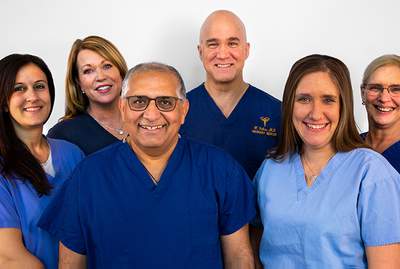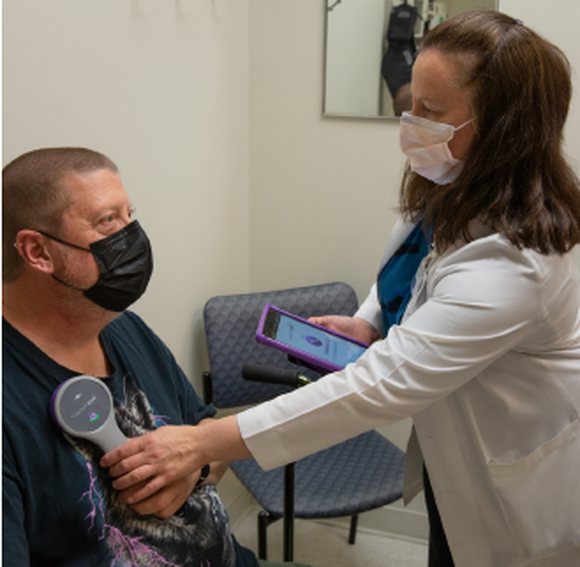
Mary Campagna-Gibson, MD treating a patient
For Dr. Mary Campagna-Gibson, a Neurologist with the Froedtert South Medical Group, it was a 45-year-old man with teenaged daughters. “He thought he was healthy enough that he just never went to see any doctors,” Dr. Campagna-Gibson said. Until one day when he suffered a stroke. “He had sudden paralysis on his right side and couldn’t speak at all,” Dr. Campagna-Gibson recalled. “He was unable to hold himself up. He had no strength in his arms, legs or face. He couldn’t swallow.” Today, thanks to swift emergency treatment he received at Froedtert Pleasant Prairie Hospital, he’s made a remarkable recovery. “He’s walking independently, driving again, back to being there for his children, even lifting weights at the YMCA,” Dr. Campagna-Gibson said. “Seeing someone go from paralyzed to walking again is amazing.”
A GREAT FEELING
For Dr. Arvind Ahuja, a Neurosurgeon and Neuro endovascular Specialist with the Froedtert South Medical Group and Neurosurgery and Endovascular Associates, it was a 35-year-old woman who was “working, independent, with a great life,” Dr. Ahuja recalled. Until about a year and a half ago. “She had a large brain hemorrhage and was comatose,” Dr. Ahuja said. “Now, she’s functional, she’s talking, she’s active, she interacts with others. It just makes us very happy every time we see her, and her family around her. We’re fortunate enough to see that day in and day out at Froedtert South.”
Dr. William Falco, Medical Director of the Froedtert South Stroke Program and an Emergency Medicine Physician, said achieving results like these for patients is what makes him passionate about stroke care. “When we see a patient with extreme stroke symptoms,” Dr. Falco said, “and then in front of our very eyes we see them talking again after being unable to speak, and able to move their arms and legs again, it’s a really great feeling.” “We’re focused on providing the best possible care and keeping the patient’s future in mind when we’re making decisions,” said Shannon Godbolt, Stroke Program Coordinator and a Nurse Practitioner at Froedtert South. “We work hard to make sure we’re doing everything right.”
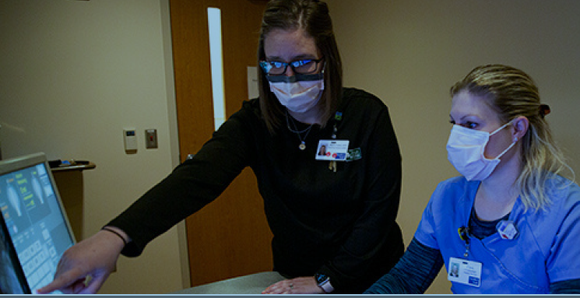
CT Control Panel
PRIMARY STROKE CENTERS
Since 2017, Froedtert Kenosha Hospital and Froedtert Pleasant Prairie Hospital have been certified as primary stroke centers by the American Heart Association and The Joint Commission, an independent organization that accredits healthcare organizations worldwide.
“Being certified primary stroke centers is a big positive for the community,” Dr. Falco said. “It shows that we recognize the devastation that stroke can cause, and that we’re acting responsibly to provide the highest level of stroke care to the community."
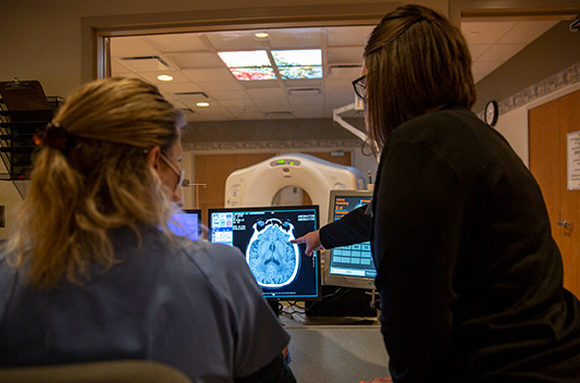
Reviewing a CT Brain Scan
COMPREHENSIVE STROKE CARE
“It tells the community we have a dedicated team that really cares about everything that happens to patients and their families,” Dr.Ahuja said. “It also says we care about timely treatment. We have enhanced the speed with which we treat stroke patients.”
“Being a certified primary stroke center means that there’s a team of people working together to benefit each patient,” Dr.Campagna-Gibson said. “It begins with all the emergency medical services (EMS) in the area. They know we’re a certified primarystroke center so they bring patients here because this is where they’re going to get the best, most comprehensive stroke care.”
STROKE ALERT
“The EMS team calls our emergency department while they’re on the way with astroke patient,” Shannon Godbolt said. “We activate our stroke team by calling a stroke alert.”
“There’s a team waiting in the emergency department to get everything going immediately,” Dr. Campagna-Gibson said. “In most cases,” Shannon Godbolt said,“ patients go straight to a CT scanner to get a scan of their brain. We also do labs, anelectrocardiogram and other diagnostic tests – all within the first 30 minutes.”
“With a stroke,” Dr. Falco said, “time is brain, meaning that as seconds go by, braincells are dying. So the sooner we can treat a patient, the better our chances of being able to limit the impacts of a stroke.”
Patients who have suffered an ischemic stroke – typically caused by a blood clot in the brain – may be given medication called tPAto break up the clot. “If that doesn’t work,” Dr. Ahuja said, “my role is to insert a catheter through the groin, like other physicians dofor the heart. If a clot is stuck in the middle of a patient’s brain, I can remove it and get oxygen and nutrition flowing back to the brain.”
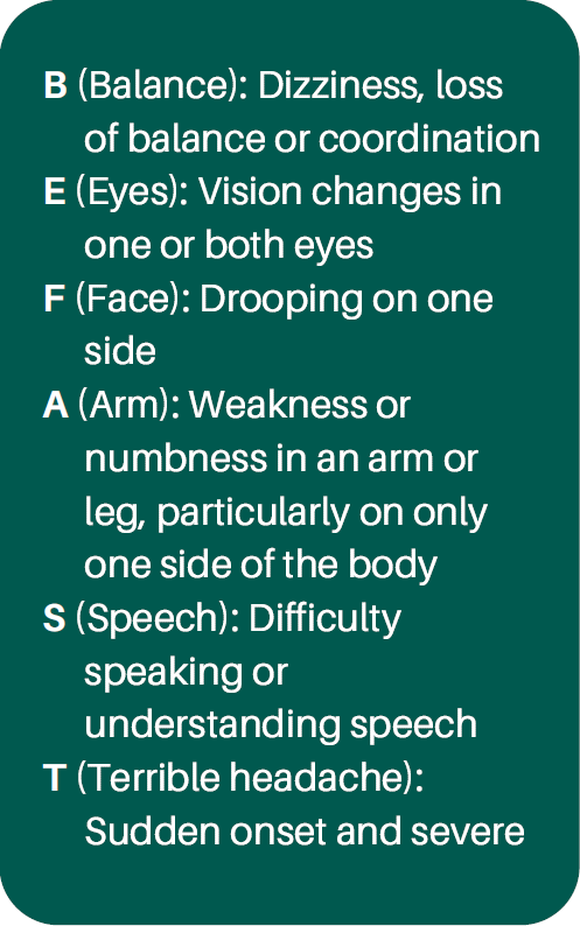
BE FAST
BE FAST
In addition to non-invasive procedures, Dr. Ahuja is one of only a few neurosurgeonsin the world who also performs surgery for ischemic strokes as well as hemorrhagicstrokes, which are typically caused by a ruptured aneurism or brain injury .
“At Froedtert South,” Dr. Ahuja said, “we have the ability to perform minimally-invasive vascular surgery as well as open surgery for strokes caused by a blood clot orhemorrhage. Either way, time is of the essence. When you see the symptoms, don’twait to see what happens,” Dr. Ahuja said. “We want patients to "BE FAST." Come tothe hospital to get diagnosed and treated.”
“Knowing these signs and symptoms,” Dr. Campagna-Gibson said, “and getting tothe hospital as soon as possible can improve your chances.”
BE OUR BEST
After patients leave the hospital, monitoring, educating and a support group providelong-term care. “Whatever we’re able to accomplish to get our patients back tonormal, or as healthy as possible,” Shannon Godbolt said, “means everything for therest of their lives and their ability to do the things they love.”
“If a member of your family had a stroke,” Dr. Falco said, “you may know how lifealtering it can be for a patient and their family. That’s one of the reasons we’re sopassionate about what we do. We know how an excellent stroke program canpositively impact the lives of patients and their families.”
“When things go well for a patient, it makes it all worth it,” said Shannon Godbolt.“This is what we’re here to do: be our best for them.”
